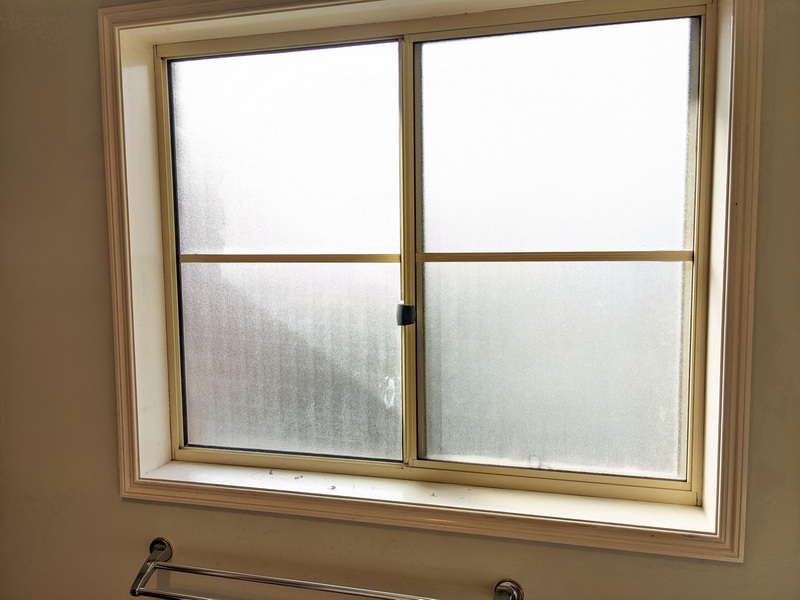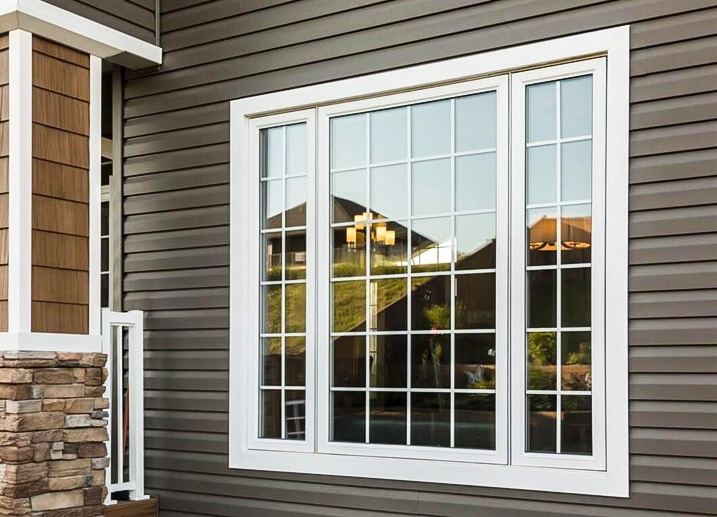English


Views: 222 Author: Dream Publish Time: 2025-01-05 Origin: Site











Content Menu
● Understanding Energy Efficiency in Windows
● Key Features for Energy Efficiency
>> 1. Thermal Break Technology
>> 2. Low-Emissivity (Low-E) Glass
>> 3. Double or Triple Glazing
● Additional Methods to Enhance Energy Efficiency
● Advanced Techniques for Improved Efficiency
>> 1. Use Wide Polyamide Insulation Strips
>> 2. Optimize Insulation Values with Foam
>> 3. Reflective Foils or Low-E Foils
● Benefits of Energy-Efficient Aluminum Windows
● The Role of Proper Maintenance
● FAQ
>> 1. How do thermal breaks improve window efficiency?
>> 3. Can I upgrade my existing aluminum windows for better efficiency?
>> 4. Are all aluminum frame windows energy efficient?
>> 5. How much can I save on energy bills with efficient windows?
Aluminum windows are a popular choice for many homeowners due to their durability, aesthetic appeal, and low maintenance requirements. However, traditional aluminum frames can be less energy-efficient compared to other materials like vinyl or wood. Fortunately, advancements in technology have made it possible to enhance the energy efficiency of aluminum windows significantly. This article will explore various methods to improve the energy efficiency of aluminum windows, ensuring that your home remains comfortable year-round while potentially reducing energy costs.

Energy-efficient windows are designed to minimize heat transfer between the interior and exterior of a building. This is crucial for maintaining indoor temperatures and reducing reliance on heating and cooling systems. The key components that contribute to the energy efficiency of aluminum windows include:
- Thermal Breaks: Insulating materials that separate the interior and exterior metal components of the window frame.
- Low-E Coatings: Special coatings that reflect heat back into the room while allowing natural light to enter.
- Double or Triple Glazing: Multiple panes of glass separated by insulating gas, which reduces heat transfer.
To make aluminum windows more energy-efficient, consider the following features:
Thermal breaks are essential for improving the energy efficiency of aluminum windows. They consist of insulating materials placed between the interior and exterior parts of the frame, significantly reducing heat transfer. This technology helps prevent drafts and maintains a stable indoor temperature.
Low-E glass has a microscopic coating that reflects thermal radiation. This helps keep indoor temperatures stable by minimizing heat loss in winter and heat gain in summer. When choosing aluminum windows, opt for those with Low-E glass to enhance energy efficiency.
Windows with double or triple glazing feature multiple panes of glass with a layer of inert gas (like argon) between them. This design provides better insulation than single-pane windows, reducing heat transfer and improving overall energy efficiency.
In addition to selecting windows with advanced features, there are several other methods you can employ to improve the energy efficiency of your aluminum windows:
- Proper Installation: Ensure that windows are installed correctly to prevent air leaks. Poor installation can lead to significant energy loss.
- Weatherstripping: Apply weatherstripping around the window frames to seal gaps and prevent drafts.
- Window Films: Consider applying window films that reflect heat while allowing light to pass through. These films can further enhance insulation.
- Shading Devices: Install external shading devices such as awnings or pergolas to reduce solar heat gain during hot months.
- Insulating Curtains or Blinds: Use heavy curtains or blinds during extreme weather conditions to provide an extra layer of insulation.

To further enhance the energy efficiency of aluminum windows, consider implementing advanced techniques:
Using wide polyamide insulation strips can significantly increase the U-value (a measure of thermal performance) of aluminum window frames. These strips have low thermal conductivity, minimizing heat transfer through modern aluminum window frames[1].
Introducing insulating foams into the hollow chambers within aluminum profiles can further improve their U-value. Polyurethane foam is commonly used for this purpose as it provides excellent thermal separation[1].
Applying highly reflective low-E foils can enhance thermal properties by reducing energy losses caused by heat radiation escaping outside[1]. This allows for further optimization without altering the window's structure.
Investing in energy-efficient aluminum windows offers numerous benefits:
- Reduced Energy Costs: By minimizing heat transfer, you can lower your heating and cooling bills significantly.
- Increased Comfort: Improved insulation leads to a more comfortable indoor environment, free from drafts and temperature fluctuations.
- Environmental Impact: Energy-efficient windows contribute to reduced carbon emissions by lowering energy consumption.
- Enhanced Property Value: Homes equipped with energy-efficient features often have higher resale values due to their appeal and lower operating costs.
To ensure that your aluminum windows remain energy efficient over time, regular maintenance is essential:
- Inspect Seals and Weatherstripping: Regularly check seals and weatherstripping for wear and replace them as necessary to maintain airtightness.
- Clean Window Frames and Glass: Keeping frames clean prevents dirt buildup that could affect performance while also allowing more natural light into your home.
- Check for Damage: Inspect frames for any signs of corrosion or damage that could compromise their insulating properties.
Making aluminum windows more energy-efficient is achievable through various strategies, including using thermal breaks, Low-E glass, and double or triple glazing. Additionally, proper installation and supplementary techniques like weatherstripping and shading devices can further enhance their performance. By investing in these improvements, homeowners can enjoy greater comfort, reduced energy costs, and a positive environmental impact.

Thermal breaks reduce heat transfer by providing an insulating barrier between the interior and exterior metal components of the window frame, preventing drafts and maintaining stable indoor temperatures.
Low-E glass is coated with a microscopic layer that reflects thermal radiation while allowing visible light to pass through. This helps keep homes warmer in winter and cooler in summer by minimizing heat loss and gain.
Yes! You can improve old aluminum windows by adding weatherstripping, applying window films, or installing storm windows. Upgrading to Low-E or double-glazed glass can also enhance their efficiency significantly.
Not all aluminum frame windows are inherently energy efficient; however, those equipped with thermal breaks, Low-E coatings, and multiple panes can achieve high levels of efficiency comparable to other materials like vinyl or wood.
The savings on energy bills vary based on factors such as climate, window quality, and home insulation. However, homeowners often report savings ranging from 10% to 50% on heating and cooling costs after upgrading their windows.
[1] https://www.al-guard.com/articles/aluminum%20windows-aluminum%20doors-insulation%20window
[2] https://esnaglass.com/aluminum/energy-efficient-aluminum-windows/
[3] https://thegreenfortune.com/energy-efficient-windows-benefits/
[4] https://www.codmarsl.com/en/blog-en/energy-efficiency-in-aluminum-windows-everything-you-need-to-know/
[5] https://ecochoicewindows.ca/energy-efficiency-in-aluminum-windows-myths-and-facts/
[6] https://airmasterwindows.com/benefits-of-energy-efficient-windows-you-definitely-want/
[7] https://www.krcaluprofiles.com/blog/how-aluminum-window-profiles-improve-energy-efficiency/
[8] https://ramwindows.com/blog/energy-efficiency-and-aluminum-windows-what-you-need-to-know
[9] https://www.greencitytimes.com/the-environmental-benefits-of-energy-efficient-windows/
[10] https://alcoi.in/6-ways-aluminium-window-frames-boost-energy-efficiency-in-homes/
Stainless Steel Pipes Vs Galvanized Pipes: Durability And Cost Analysis
Comparing Stainless Steel Pipes And PVC Pipes: What You Need To Know?
Stainless Steel Pipes Vs Copper Pipes: Pros And Cons for Industrial Use
Seamless Stainless Steel Pipes Vs Welded Pipes: Key Differences Explained
Stainless Steel Pipes Vs Carbon Steel Pipes: Which One Suits Your Project?
Stainless Steel Sheets Vs Galvanized Steel Sheets: Pros And Cons Compared
Stainless Steel Sheets Vs Aluminum Sheets: Which One Suits Your Project?
Cold Rolled Vs Hot Rolled Stainless Steel Sheets: Key Differences Explained
How To Choose Stainless Steel for Industrial Guardrails And Railings?
